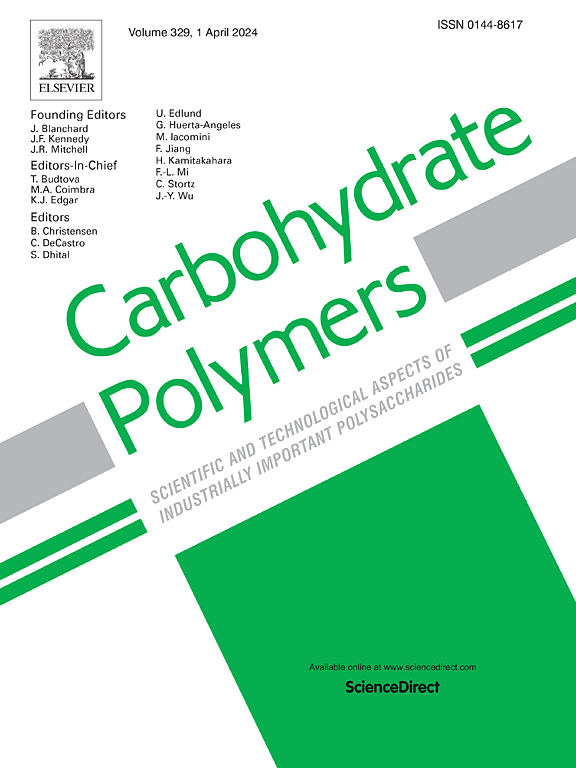以n -羟基邻苯二胺为氧化还原催化剂,壳聚糖持续电化学解聚制备盐酸氨基葡萄糖
IF 10.7
1区 化学
Q1 CHEMISTRY, APPLIED
引用次数: 0
摘要
虽然壳聚糖的化学和酶解聚已经得到了广泛的研究,但电化学方法实现完全解聚成葡萄糖胺(GlcN)的构建块尚未报道。以前的研究只降低了分子量,而没有产生重复的单位糖。在这里,我们证明了在温和的恒电流条件下,用n -羟基酞酰亚胺(NHPI)作为绿色氧化还原介质,壳聚糖直接电化学转化为盐酸氨基葡萄糖。用钛网电极在醋酸缓冲液中进行,该工艺可获得高收率的结晶GlcN。结构分析证实了α-和β-的选择性形成,没有检测到过度氧化的副产物。重要的是,系统的动力学研究nhpi介导的壳聚糖解聚,以前没有报道,进行。电化学监测显示NHPI与其氧自由基形式邻苯二甲酸亚胺- n -氧(PINO)之间存在稳定的氧化还原循环,并逐渐消耗底物。本工作建立了一个操作简单、环境友好的电化学平台,用于从多糖中选择性生产构建块,解决了壳聚糖增值的未满足需求。本文章由计算机程序翻译,如有差异,请以英文原文为准。

Sustainable electrochemical depolymerization of chitosan into glucosamine hydrochloride using N-hydroxyphthalimide as a redox catalyst
While chemical and enzymatic depolymerization of chitosan has been extensively studied, electrochemical methods achieving complete depolymerization into glucosamine (GlcN) building blocks have not been reported. Previous studies only reduced molecular weight without producing repeating unit sugars. Here, we demonstrate the direct electrochemical conversion of chitosan into glucosamine hydrochloride using N-hydroxyphthalimide (NHPI) as a green redox mediator under mild galvanostatic conditions. Conducted in acetate buffer with titanium mesh electrodes, the process affords crystalline GlcN in high yield. Structural analyses confirmed selective formation of both α- and β-anomers without detectable overoxidized by-products. Importantly, systematic kinetic studies of NHPI-mediated chitosan depolymerization, not previously reported, were performed. Electrochemical monitoring revealed a stable redox cycle between NHPI and its oxyl radical form, phthalimide-N-oxyl (PINO), along with progressive substrate consumption. This work establishes an operationally simple and environmentally benign electrochemical platform for selective building blocks production from polysaccharides, addressing an unmet need in chitosan valorization.
求助全文
通过发布文献求助,成功后即可免费获取论文全文。
去求助
来源期刊

Carbohydrate Polymers
化学-高分子科学
CiteScore
22.40
自引率
8.00%
发文量
1286
审稿时长
47 days
期刊介绍:
Carbohydrate Polymers stands as a prominent journal in the glycoscience field, dedicated to exploring and harnessing the potential of polysaccharides with applications spanning bioenergy, bioplastics, biomaterials, biorefining, chemistry, drug delivery, food, health, nanotechnology, packaging, paper, pharmaceuticals, medicine, oil recovery, textiles, tissue engineering, wood, and various aspects of glycoscience.
The journal emphasizes the central role of well-characterized carbohydrate polymers, highlighting their significance as the primary focus rather than a peripheral topic. Each paper must prominently feature at least one named carbohydrate polymer, evident in both citation and title, with a commitment to innovative research that advances scientific knowledge.
 求助内容:
求助内容: 应助结果提醒方式:
应助结果提醒方式:


